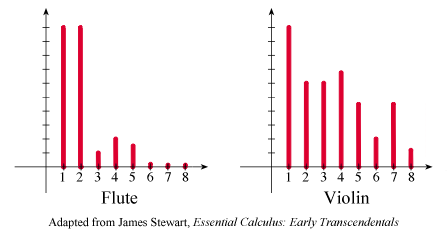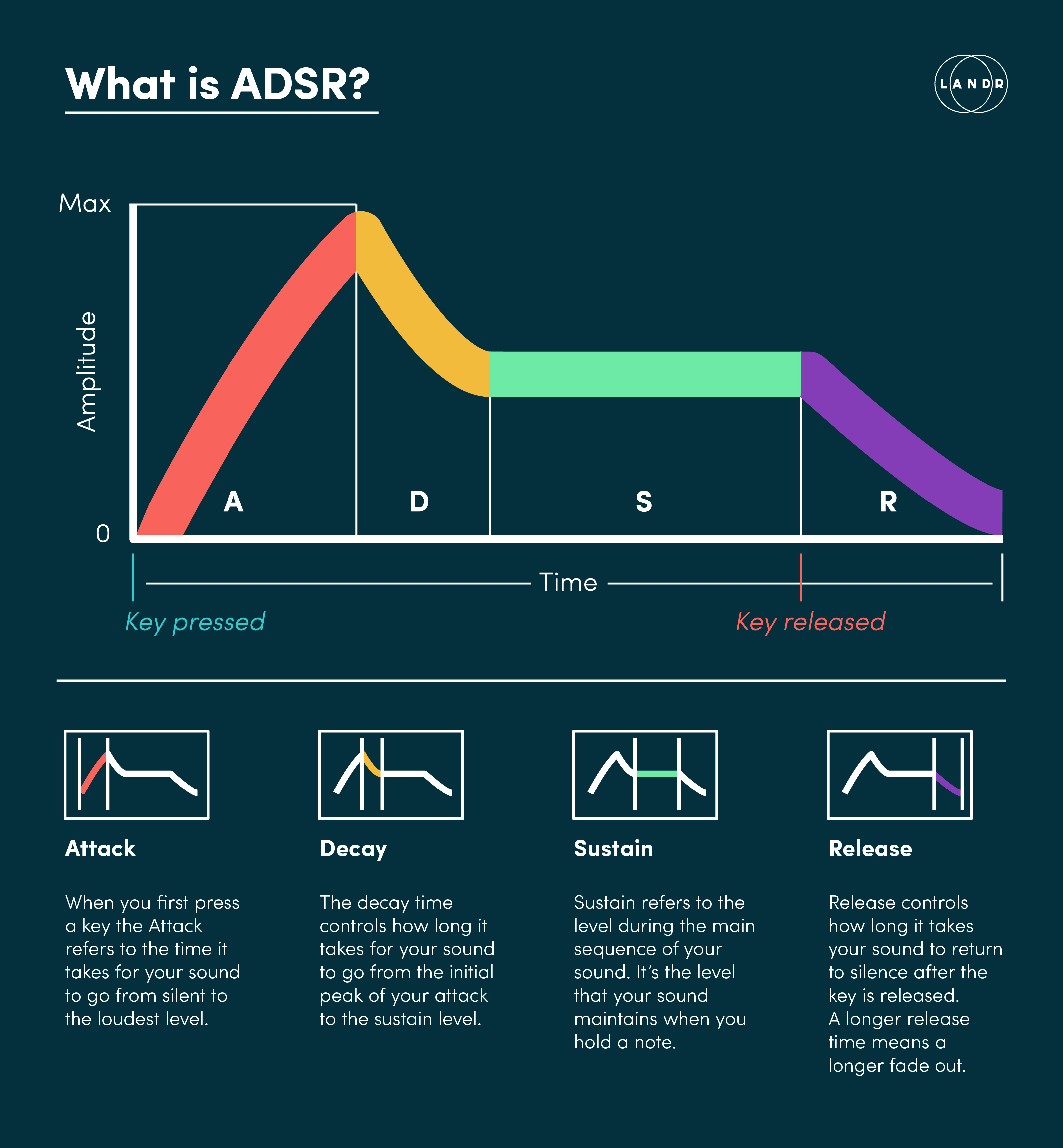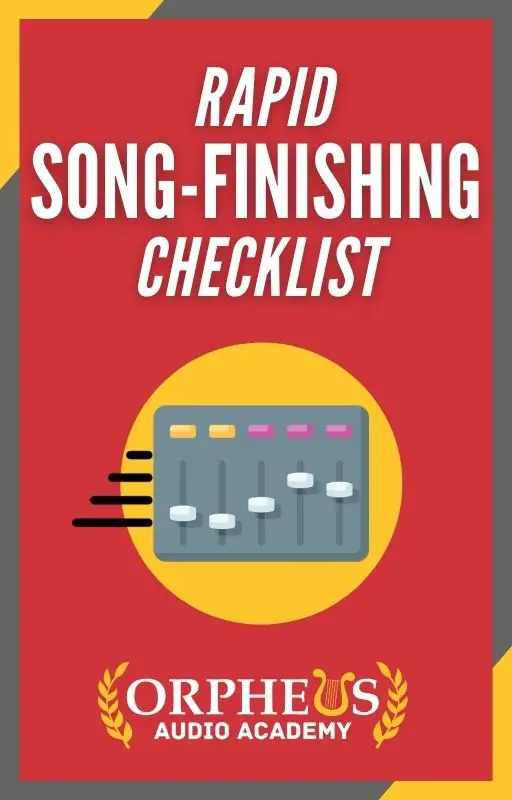Michelangelo once said that,
“Every block of stone has a statue inside it and it is the task of the sculptor to discover it.”
Michelangelo
Well, I would say every blank project in your DAW has an audio statue inside it just waiting for you, the sonic sculptor, to discover it.
That’s really what you are. A sonic sculptor.
Sure, you may tell people that you are a music producer, or an audio engineer, but you should think of yourself as a sonic sculptor, and I’ll tell you why in a little bit.
But first of all, any good sculptor has to know what he is sculpting before he can go about crafting his masterpiece.
I’m not talking about tools. I’m talking about the material itself. The stone.
All sound waveforms (your stone) is comprised of 7 characteristics.
Here they are, and why you need to know them.
1. Frequency

Think of sound like a wave in the ocean washing up on a beach.
“Frequency” is how fast the waves are crashing on the shore.
In more sonic terms, frequency is the rate at which a sound wave completes a cycle
Peak, trough, back to peak. Or put another way, every time the wave goes from up, down, to back up is one cycle, and frequency is how fast that cycle is being repeated.
To boil that all down, “Frequency” is just another term for “pitch”.
Understanding frequency is extremely important in creating a sonic masterpiece.
A major part of recording, mixing, and mastering involves assembling, shaping, and refining different frequency ranges (pitches) into a consonant (pleasurable) arrangement.
And just how we measure how fast a car is going in miles per hour, or kilometers per hour, we also measure how fast (how frequent) a sound wave cycle is repeating.
We measure sound frequency in terms of “cycles per second”, or “Hertz”, named for Heinrich Rudolf Hertz, a German physicist who first conclusively proved the existence of electromagnetic waves.
In other words, a hertz equals one cycle per second. A thousand hertz (or 1 kilo hertz) equals 1,000 cycles per second. The sound wave is going up and down and back up a 1,000 times a second.
The abbreviation for hertz is “Hz” and the abbreviation for kilo hertz is “KHz”, and often times just “K”.
2. Amplitude

Another characteristic of sound is “Amplitude”.
This can also be considered “intensity”.
Going back to our ocean example, if frequency is how fast the waves are crashing on the shore, Amplitude is how high (or low as the case may be) the waves are.
Boiling this down even more, amplitude is simply volume. How loud, or soft, is your sound?
The unit of measurement for amplitude (volume) is called the “Decibel”, which is shortened to “Db”.
3. Timbre

Whenever I see this word, I want to pronounce it “tim-bray”.
But that’s not how it’s pronounced.
If I can’t call it tim-bray, I next feel like pronouncing it “tim-bur”.
As in, you’re in the forest cutting down a tree, and it starts to fall, and so you shout, “TIMMMMBUUURRRR!!!”
But this isn’t how you pronounce this term either.
As you probably know, and much to my chagrin, it is pronounced “Tam-bur”
Darn French (no offense of French people).
Random fact: The origin of this word is actually the Greek word “Tumpanon”, meaning “drum”, which the French then horribly mutilated, I mean improved, to Timbre.
Pronunciation aside, timbre is a fancy word for “tone”, or the color of a sound.
Timbre is why two different instruments can be playing the same exact note, at the same exact volume, and yet they still sound different.
This is because every note is not played in isolation.
Sure, you may be playing a middle C on a piano, but that is only the “fundamental” note.
There are also other subtle frequencies (pitches) at play as well. Some are lower in pitch than your fundamental, called subtones, and some some are higher in pitch, which are called overtones.
These subtones and overtones are collectively known as “harmonics”.
These different harmonics are what color a sound, and give sounds certain unique timbres.
4. Envelope

This is not one of those things that you receive a letter in, but rather, how a sound behaves over time.
“Envelope” is also referred to as an “ADSR Envelope” or just “ADSR”.
This is because Envelope is really 4 separate characteristics in one.
Attack
Attacks is how quickly a sound reaches it's peak volume after the sound is activated (the key is pressed).
A “slow” attack means that the sound takes a considerable amount of time to reach it's loudest point (like an ambient synth pad), whereas a “fast” attack hits full blast right away (like a pluck).
Decay
How quickly the sound drops to the sustain level after the sound hits it's peak.
Sustain
The constant volume that a sound sits at after decay until the note is released. So long as you are still holding the key down, and the sound has already passed through it's attack and decay phases, then it will sit at this volume until you release the key.
Release
How quickly the sound fades to nothing once a note ends (the key is released). Some sounds might end instantly after a key is released, others might ring out longer.
5. Velocity
The speed at which sound travels.
How fast does sound travel exactly? Well it depends on different factors, such as humidity, density, and temperature.
However, in general, here are some good measurements:
- 1127 feet per-second (fps)
- 343.4 meters per-second (mps)
- 767.54 miles per-hour (mph)
The most practical of these would be the fps. This is good to know for when you are setting up reverbs, or if you are mixing live.
6. Wavelength
This is simply the distance between successive crests of a sound wave.
7. Phase
The best definition of phase that I have found comes from Sweetwater:
Audio waveforms are cyclical; that is, they proceed through regular cycles or repetitions. Phase is defined as how far along its cycle a given waveform is. The measurement of phase is given in degrees, with 360 degrees being one complete cycle.
One concern with phase becomes apparent when mixing together two waveforms. If these waveform are “out of phase”, or delayed with respect to one another, there will be some cancellation in the resulting audio. This often produces what is described as a “hollow” sound. How much cancellation, and which frequencies it occurs at depends on the waveforms involved, and how far out of phase they are (two identical waveforms, 180 degrees out of phase, will cancel completely).
Basically, your concern with phase is having your sounds being out of phase. If your sounds are out of phase with each other, they can actually cancel each other out, leaving you with a loss of sound!
1-1=0.
Why Do These Matter?
One mistake beginning producers and recording artists make is trying to rely too heavily on formulas.
Remember when I said above that you should think of yourself as a “Sonic Sculptor”? This means rather than defaulting to what you think you are supposed to do, instead, listen.
What do you hear? What is out of place?
Whatever it is, it is going to be one of these 7 things.
Maybe one track is too loud in comparison to the other instruments (amplitude).
Or maybe another track is too muddy and bassy (frequency).
Or maybe a particular sound takes too long to ramp up, or extends too long when it should be cut short (envelope).
These are just a few examples, but the point is not to be too overwhelmed when trying to mix a song.
Listen for these 7 characteristics, and evaluate how they fit together, and what needs adjusted.
Rather than just reaching for your tools before you really know what needs adjusted, instead, examine which parts of your sculpture need more sculpting, and then choose the appropriate tool.
Now, if you want to learn a step-by-step process for applying these characteristics of sound to your mixing…
Then grab my free rapid song-finishing mixing check list below.

Create Better Songs, Faster
Click below to download my free song-finishing checklist to help you create radio-ready songs without taking months to complete them.
Please like and share if you found this post helpful, and let me know in the comments below what your biggest mixing struggle is.
Thanks for reading!
– Reagan

As a teacher I was elated seeing sound ways in a fresh perspective
THANK YOU
I’ve never seen sound waves measured in anything other than meters per second, but still a very handy article, thank you!
Thanks
I am actually doing my research in my field of study in sound engineering. And to be honest , this has been one of the best sites I have found and has explained to details. Thank you.
That’s so cool! Thanks so much for the encouragement!
Nice artical. Easy to understand for a beginner like me. Thanks a lot.
Thanks for this simple and practical explanation of sound!
You’re welcome!
Really now I understood all about sound.
Thank you Reagan
You’re very welcome!
Nice job. One typo: 343 (or so)is the sound speed in METERS per second, not miles per sec.
Ah, thanks for the catch! I’ll update it.